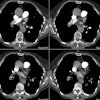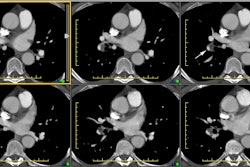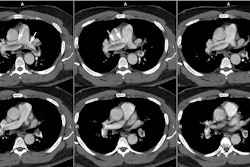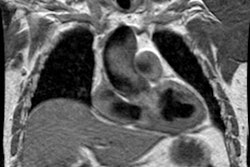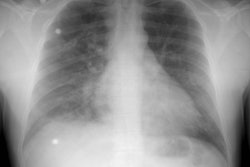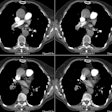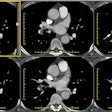Radiology 1997 Oct;205(1):153-157. Spiral CT artifact that simulates aortic dissection: image reconstruction with use of 180 degrees and 360 degrees linear-interpolation algorithms.
Loubeyre P, Angelie E, Grozel F, Abidi H, Minh VA
PURPOSE: To evaluate a computed tomographic (CT) artifact that simulates aortic dissection. MATERIALS AND METHODS: Two groups of 65 patients underwent spiral CT of the chest for reasons other than suspected aortic dissection. In each group, two series of images (10-mm sections) were reconstructed with use of a 180 degrees or 360 degrees linear-interpolation algorithm. Series of images were read by two radiologists, and variance between interpretations was statistically measured. RESULTS: Among series of images, artifacts were seen on 21-26 (32%-40%) with use of a 180 degrees algorithm and 41 (63%) and 44 (68%) with use of a 360 degrees algorithm. Concordance between reviewers was fair (kappa = 0.58, 0.59) or good (kappa = 0.65) with use of a 180 degrees algorithm and excellent (kappa = 0.92) with use of a 360 degrees algorithm. In one group, with use of a 180 degrees algorithm, two series of reconstructed images were separated by 5 mm; artifact was observed on seven (11%) CT studies (on both series of images) and was located along the left or left anterior side of the aorta. CONCLUSION: To reduce the frequency of a spiral CT artifact that simulates aortic dissection, two series of segmented images can be reconstructed with a change of image position along the z axis of the aorta and use of a 180 degrees linear-interpolation algorithm.
PMID: 9314977, MUID: 97460595
